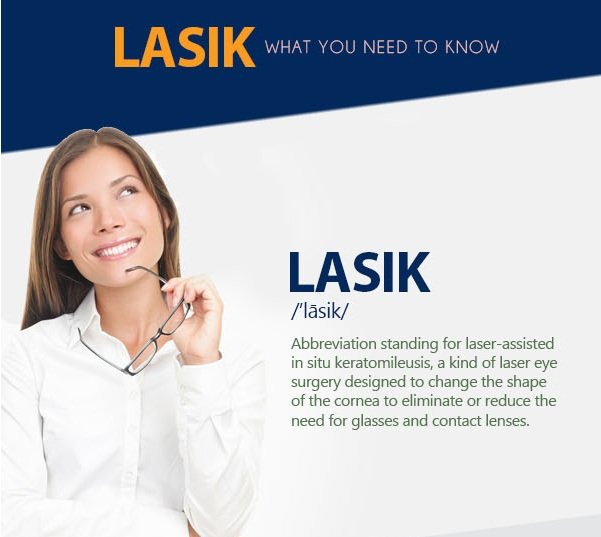What Are The Distinctions And Resemblances Between SMILE Eye Surgery, LASIK, And PRK?
What Are The Distinctions And Resemblances Between SMILE Eye Surgery, LASIK, And PRK?
Blog Article
Article Developed By-Fischer Wilder
If you've been thinking about SMILE eye surgery, you could question just how it compares to LASIK and PRK. Each treatment has its very own collection of benefits and factors to consider. From quicker healing times to possible risks, there are crucial differences you must know before making a decision. Comprehending these differences will help you make an enlightened option that straightens with your details demands and assumptions. Curious to know even more regarding just how these procedures contrast carefully? Keep discovering to get a detailed understanding of SMILE, LASIK, and PRK.
SMILE Eye Surgical Treatment Review
If you're considering SMILE eye surgical procedure, you'll discover it to be a minimally invasive procedure with a quick healing time. During SMILE (Tiny Laceration Lenticule Removal), a laser is used to develop a small, specific cut in the cornea to get rid of a small piece of cells, reshaping it to correct your vision. This varies from LASIK, where a flap is produced, and PRK, where the outer layer of the cornea is entirely eliminated.
One of the vital advantages of SMILE is its minimally invasive nature, resulting in a faster recovery process and much less pain post-surgery. The recovery time for SMILE is reasonably fast, with many individuals experiencing boosted vision within a day or two. This makes it a prominent choice for those seeking a hassle-free and efficient vision adjustment procedure. In addition, SMILE has been shown to have a lower danger of dry eye syndrome compared to LASIK, making it a desirable choice for people worried concerning this possible side effect.
Differences In Between SMILE, LASIK, and PRK
When comparing SMILE, LASIK, and PRK eye surgeries, it is very important to comprehend the distinct techniques made use of in each treatment for vision improvement.
SMILE (Little Incision Lenticule Extraction) is a minimally intrusive procedure that involves creating a little laceration to extract a lenticule from the cornea, reshaping it to deal with vision.
cataract surgery 20/40 vision (Laser-Assisted In Situ Keratomileusis) includes developing a thin flap on the cornea, utilizing a laser to reshape the underlying tissue, and after that repositioning the flap.
PRK (Photorefractive Keratectomy) gets rid of the outer layer of the cornea before improving the cells with a laser.
The main difference lies in the means the cornea is accessed and dealt with. SMILE is flapless, making it an excellent option for people with thin corneas or those associated with get in touch with sports. LASIK offers fast aesthetic recuperation due to the flap creation, yet it might pose a higher threat of flap-related issues. PRK, although having a much longer recuperation duration, stays clear of flap-related concerns completely.
Comprehending these variances is vital in picking the most ideal treatment for your vision modification requirements.
Advantages And Disadvantages Contrast
To assess the advantages and downsides of SMILE, LASIK, and PRK eye surgical treatments, it's important to take into consideration the specific benefits and potential limitations of each treatment. SMILE surgery supplies the benefit of a minimally intrusive treatment, with a smaller sized laceration and possibly quicker recuperation time compared to LASIK and PRK. It likewise decreases the danger of completely dry eye post-surgery, an usual side effect of LASIK. Nonetheless, SMILE may have constraints in treating greater levels of myopia or astigmatism compared to LASIK.
LASIK surgery offers fast visual healing and minimal pain throughout the treatment. It's highly effective in dealing with a wide range of refractive mistakes, consisting of nearsightedness, hyperopia, and astigmatism. Yet, LASIK lugs a risk of flap problems, which can impact the corneal structure.
PRK eye surgical treatment, while not as prominent as LASIK, avoids producing a corneal flap, reducing the danger of flap-related issues. look here appropriates for people with thin corneas or uneven corneal surface areas. Nevertheless, PRK has a much longer healing time and might include more pain during the recovery process.
Conclusion
So, when it comes to selecting in between SMILE, LASIK, and PRK, think of it like choosing the best set of shoes. SMILE is like a smooth, comfy set of tennis shoes - quick and simple.
LASIK is more like trendy high heels - flashy and quickly, yet with some potential risks.
PRK resembles durable hiking boots - dependable and durable, but calling for a little bit even more time and effort.
Ultimately, more information relies on your private demands and preferences.
